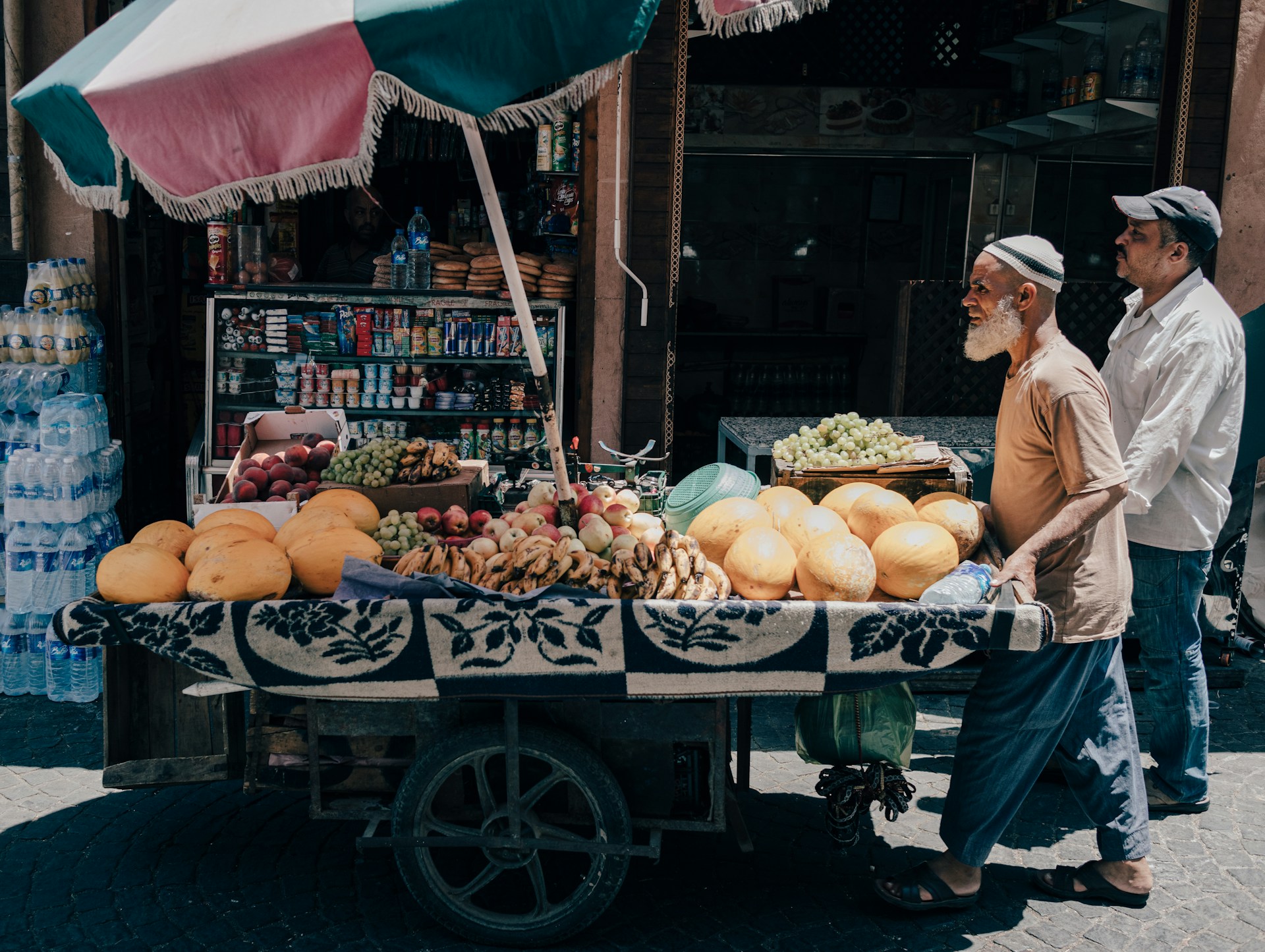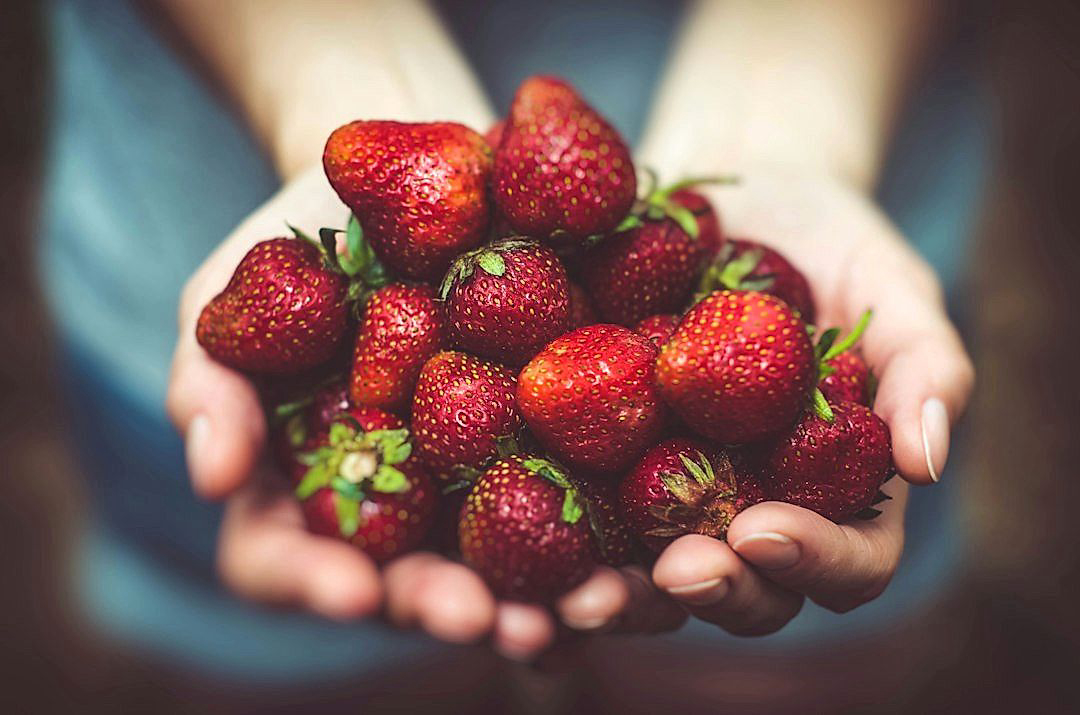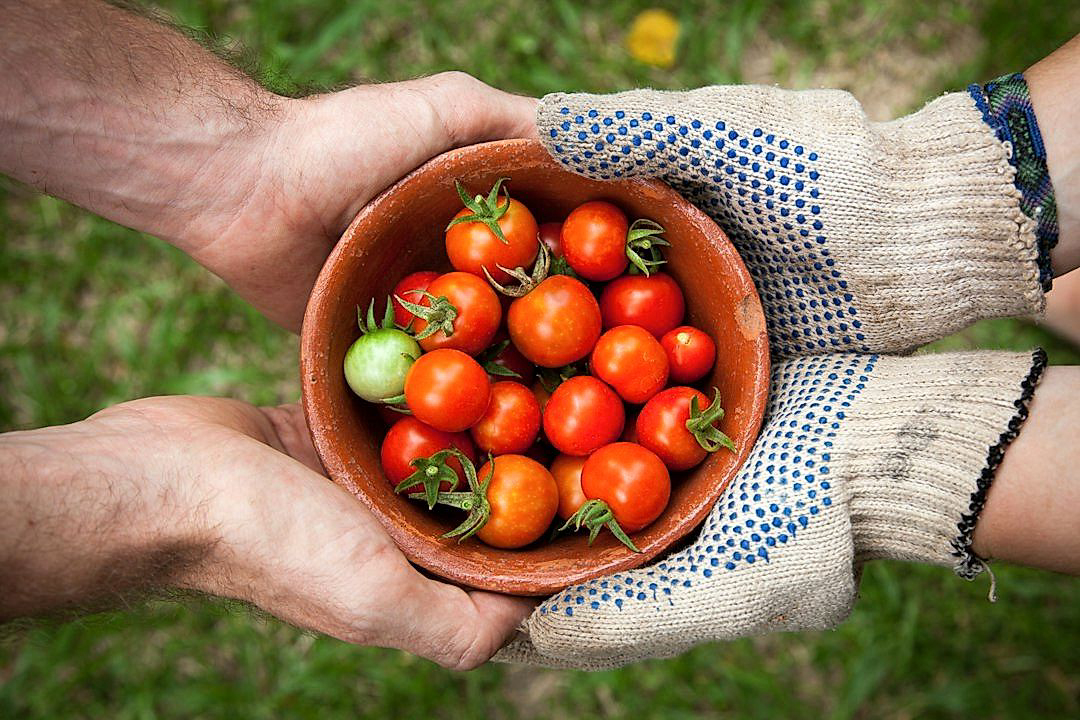Sharp changes in market dynamics indicate the significance of staying abreast with the latest trends in the global produce markets for packers.
Patterns and consumer preferences are constantly evolving, pushing packers to stay on their toes and adapt.
The necessity of understanding these trends cannot be overstated, as they influence not only packaging strategies but also procurement processes and marketing tactics.
This article looks at some of these emerging trends that may shape the industry in the near future.
Knowing these trends and their potential impact will help packers make informed decisions.
Let us delve into these trends for a comprehensive understanding of the international produce market landscape.
Contents
- Trends In Global Produce Markets Packers Should Watch
- 1. Rising demand for organic fruits and vegetables
- 2. Increased focus on sustainable packaging
- 3. Shift towards locally sourced produce
- 4. Rapid Growth in Vegan and Plant-Based Diets
- 5. Surge in demand for exotic fruits
- 6. Technological advancements in cold storage transport
- 7. Growing online grocery shopping trends
- The Bottom Line
Trends In Global Produce Markets Packers Should Watch
1. Rising demand for organic fruits and vegetables
The global trend towards healthier food options has significantly bolstered the demand for organic fruits and vegetables.
People are showing an increasing interest in fare that is free of synthetic pesticides and fertilizers, which directly translates into more consumers seeking organic produce.
Organic food sales have skyrocketed in recent years, underscoring this shift in consumer preferences.
One of the crucial drivers behind this trend is a growing global consciousness regarding the impact of one’s diet on personal health and the environment.
People are more informed today about the benefits of organic farming, such as soil and water conservation, reduced pollution, and improved overall biodiversity.
The desire for a healthier and more sustainable world is fueling the demand for organic fruits and vegetables.
Said desire also stems from an increasing awareness of the adverse effects of excessive chemical use in conventional farming practices.
Research indicating that organic produce may contain higher nutrient levels compared to conventionally grown fruits and vegetables is also adding to the appeal of organic produce.
Moreover, the rising preference for clean eating and healthier lifestyles is further driving the popularity of organic foods.
The proliferation of organic food stores and markets offering a wide range of organic fruits and vegetables has made these healthy choices more accessible to consumers worldwide.
An increase in disposable income paired with the willingness to pay a premium for high-quality, nutritious, and safe food options has also contributed to the rising demand for organic produce.
In response, produce marketers and packers are continually looking for innovative ways to offer organic apples, grapes, papayas, strawberries, and other fruits, alongside farm-fresh vegetables that meet this growing demand.
From small-scale local farmers to large multinational corporations, many are investing heavily in the organic produce sector.
Farmers are embracing organic farming techniques that ensure soil health, minimize water use, and reduce greenhouse gas emissions, which, in turn, contribute to sustainable agriculture.
The trend towards the consumption of organic fruit and vegetables is expected to continue to rise as more consumers are prioritizing health and sustainability.
This shift presents significant opportunities for producers, marketers, and packers to cater to the current demand for organic fruits and vegetables while making a substantial contribution to global sustainability efforts.
2. Increased focus on sustainable packaging
Increasingly, both consumers and businesses are shifting their focus to the sustainability aspect of packaging, especially in the global produce market.
With the surging concerns about climate change and environmental health, the trend of sustainability in packaging is only expected to grow stronger in the years to come.
There is rapidly growing pressure on market packers to switch to more sustainable packaging solutions.
From edible packaging to biodegradable materials, many innovative sustainable packaging options are emerging in the market.
These alternative packaging solutions are not only more eco-friendly, but also have the potential to reduce the overall carbon footprint of the industry.
It is important to note that packing is a vital part of the supply chain, playing a significant role in maintaining the quality and freshness of the produce.
Packers are also taking into account the legacy aspect of their packaging solutions–how their packaging impacts the environment long after the produce has been consumed.
From an economic perspective, sustainable packaging can also be cost-effective in the long run.
This is due to the fact that many traditional forms of packaging, especially plastic, are becoming increasingly expensive and regulated.
Additionally, transitioning to sustainable packaging solutions could boost a company’s reputation, providing them with a unique selling point and a competitive edge in the market.
Indeed, many consumers today are willing to pay a premium for products that are packaged with respect for the environment.
Research shows that companies that incorporate sustainable practices into their business models are viewed more favorably by millennials and Gen Z consumers, who now represent a significant portion of the buying public.
In the context of the global produce market, the move towards sustainable packaging could also lead to a decrease in food waste.
This is because sustainable packaging often includes innovations designed to improve shelf-life and delay spoilage.
Clearly, the rise in demand for sustainable packaging in the global produce market is a trend that packers cannot afford to ignore.
3. Shift towards locally sourced produce
One significant trend emerging in the global produce market is the shift towards locally sourced produce.
This trend is driven by a variety of factors, both consumer-driven and supplier-driven.
From the consumer perspective, the desire for fresh, high-quality products is leading many to favor locally sourced produce.
Consumers are increasingly becoming aware of the environmental benefits of choosing locally sourced items, as they often require less transportation and, therefore, produce fewer emissions.
Further, local produce often aligns well with the growing ‘farm-to-table’ movement, which emphasizes the connection between farmers, consumers and the food they consume.
Local produce is perceived to be more authentic and trustworthy, as consumers often have a better understanding of where it comes from and how it is grown.
This has prompted a greater demand for transparency in the food supply chain, leading to increased popularity for local produce.
From a supplier’s perspective, sourcing produce locally can often be more sustainable and cost-effective.
Farmers can sell direct to consumers, cutting out the middleman and potentially increasing their profit margin.
With fewer miles to travel, producers can also reduce their carbon footprint, aligning with wider societal shifts towards more sustainable practices.
Furthermore, locally sourced produce often results in a quicker turnaround between harvest and distribution, leading to fresher, higher quality products.
While this trend is currently being witnessed on a global scale, its implications and impacts can vary significantly from region to region.
In regions with favorable climates and rich agricultural heritage, the shift towards locally sourced produce can provide a significant economic boost.
However, in regions less suited to agriculture, this trend may present more of a challenge.
Despite the potential obstacles, the move towards locally sourced produce represents a significant change in the global produce market, reflecting a broader move towards sustainability and transparency in the food supply chain.
In light of this trend, producers and suppliers worldwide will likely need to reevaluate and, if necessary, alter their sourcing strategies to accommodate this shift.
4. Rapid Growth in Vegan and Plant-Based Diets
One of the most significant trends reshaping the global produce market is the rapid growth in vegan and plant-based diets.
The growing number of people who are rejecting animal-based products in favour of plant-based alternatives is beginning to have profound effects on the ways produce is grown, packed, and sold.
Many packagers are noticing a shift in demand towards fruits and vegetables that are traditionally used in vegan cuisine.
The onset of vegan and plant-based diets is reshaping the package requirements, creating a need for packers to evolve in terms of packing material, design and sizing.
This growing trend is driven by a mix of environmental, ethical, and health concerns related to the consumption of animal products.
With the rise of veganism, consumers are showing a stronger preference for cruelty-free, sustainable and nutritious food options.
As a result, packers have begun to value produce items that cater to these diets, such as fruits, vegetables, legumes, nuts, seeds, and whole grains more than ever before.
More exotic fruits and vegetables are being sought after as more consumers explore veganism and discover new plant-based food options.
In fact, vegan and plant-based diets are no longer only adopted by a minority, but have gone mainstream in many parts of the world.
With the increasing demand for these products, it only makes sense that packers should become more conscientious about the environmental footprint of their packaging.
Many packers are turning to biodegradable or recyclable materials to package their products as a response to the environmentally-conscious values of vegan and plant-based consumers.
Another integral facet of catering to this trend is sourcing locally-grown produce, which not only supports the local economy but also minimizes the carbon footprint associated with transporting goods from far-off regions.
Moreover, packaging designs are becoming more aesthetic and informative highlighting the source, nutritional information, and vegan-friendly label to appeal to this growing market segment.
Thus, the rapid growth of vegan and plant-based diets is not only influencing consumers’ dietary habits but also reflecting on global produce markets and affecting how packers operate.
All these aspects underline the importance of staying informed about this trend and adapting business practices accordingly to remain relevant and competitive in the marketplace.
5. Surge in demand for exotic fruits
In recent years, there has been a significant surge in global demand for exotic fruits.
This is largely attributed to a growing desire amongst consumers for novel flavors and unique fruit varieties that are not commonly found in their local markets.
Exotic fruits like dragon fruit, passion fruit, mangosteen, and durian have seen sharp increases in popularity, driven largely by awareness about their numerous health benefits.
Moreover, given their unique flavors and potential use in a wide variety of culinary applications, these fruits have managed to carve a niche for themselves in households and restaurants alike.
Apart from flavor differentiation, consumers today are also increasingly concerned about the nutritional value of the fruits they consume.
Exotic fruits tend to be densely packed with key vitamins and antioxidants, making them an attractive option for health-conscious consumers.
Furthermore, increasing affluence, especially in developing countries, has made these expensive fruits more accessible to a larger demographic, thereby contributing to their growing popularity.
Additionally, exotic fruits have also benefitted from the trend of ‘food tourism’
Tourists who try these fruits during their travels often develop a liking for them and continue to demand them even after they return to their local markets.
In turn, this has led to a rise in the import of these fruits in non-tropical countries.
The logistical and regulatory challenges associated with transporting these delicate fruits across long distances and borders have at times been significant.
However, as discussed in the next section, technological advancements in cold storage transport have greatly enabled the global trade of these fruits.
Moreover, trade liberalization efforts have also aided the flourishing of the exotic fruit market.
Therefore, it is highly likely that the global demand for exotic fruits will continue to rise in the coming years.
This trend is of interest not just for farmers and exporters in the tropical countries where these fruits are grown, but also for global produce market packers who need to be mindful of the storage and packaging requirements of these delicate fruits.
As the demand for exotic fruits continues to grow across the globe, their market presence is only expected to increase, making intriguing possibilities for the producers, packers, and consumers alike.
6. Technological advancements in cold storage transport
As the global produce market continues to grow, a key trend that packers should keep an eye on is the technological advancements in cold storage transport.
These advancements are critical to maintaining the freshness and quality of perishable goods as they are transported from one location to another.
One of the more recent advancements includes the adoption of smart containers which monitor and control the temperature, humidity, and other environmental conditions within the container.
These containers use sensors and advanced algorithms to constantly adjust the environment, preventing overcooling and helping to extend the shelf life of the produce.
Another advancement is the development of more efficient refrigeration technologies.
This includes the use of energy-saving insulation materials and the shift towards natural refrigerants, which not only help to maintain temperatures but also contribute to reducing greenhouse gas emissions.
Technological advancements are also being made in the field of transport logistics and fleet management.
For instance, GPS tracking and telematics systems allow for real-time monitoring of the transport conditions, route optimization, and early detection of potential issues such as equipment failure or delays.
This results in improved operational efficiency, reduced waste, and increased profitability for produce packers and suppliers.
This trend is further amplified by the increasing use of big data analytics and machine learning algorithms in cold storage transport.
These technologies can be used to analyze vast amounts of data, predict potential issues before they occur, and devise optimal transport and storage strategies.
The increasing use of these technologies is driven by the growing demand for fresh, high-quality produce which remains undamaged during transport.
As a result, technological advancements in cold storage transport are drastically improving the efficacy of global produce supply chains.
Finally, it’s worth noting that these advancements are also contributing to the increasingly sustainable nature of the global produce trade.
By reducing waste, optimizing routes, and using more efficient technologies, cold storage transport is making a significant contribution towards reducing the overall environmental impact of the global produce markets.
7. Growing online grocery shopping trends
The development of technology and the internet has greatly influenced the current trends in global produce markets, with growing online grocery shopping trends standing out prominently.
Market experts have noticed a significant growth in the number of consumers opting for online grocery shopping in recent years, asserting the undeniable position of this trend in the global produce market.
Several factors have propelled this emerging trend, among them convenience, efficiency, and the ongoing COVID-19 pandemic which greatly shifted consumer behavior towards online shopping.
E-commerce platforms offer a wide range of options for consumers, from locally sourced produce, organic fruits and vegetables, and exotic fruits, satisfying diverse customer needs and preferences.
Online grocery shopping has done more than just provide an alternative shopping platform; it has revolutionized the way consumers view and interact with the global produce market.
The online platforms also offer an opportunity for consumers to access a wide variety of items that may not be available in their geographic locations, greatly expanding their global culinary reach.
This is positively impacting not only the consumers but also the producers. The rising demand for online-based purchase of produce has led to producers and packers reevaluating their business models, in turn leading to an increased focus on sustainable packaging.
The online ordering and delivery of groceries demand a high fuel usage and robust packaging, driving the need to adopt sustainable packaging practices.
Online grocery shopping trend also presents a unique opportunity for vendors to effectively market their produce in an increasingly competitive global market.
Through online platforms, it is much easier to reach a larger audience, provide detailed information about the produce, and even share stories about the farming practices and origin of the produce.
The rapid growth in vegan and plant-based lifestyles has also grown exponentially in online platforms with an influx of vendors and information.
Further, companies have embraced the online trend to tap into the increased demand for these diet types, effectively marketing their produce as being vegan-friendly or suitable for plant-based diets.
Another appealing aspect of online grocery shopping is the ability for consumers to leverage technology to seek out the best deals, compare prices, and read reviews on each product before making a purchase.
Technological advancements in cold storage transport play a significant role in the growth of this trend, as it ensures produce maintains its quality throughout its journey, from the farm to the consumer.
The trajectory of online grocery shopping trends suggests that this is not simply a passing fad but rather, a lasting shift in consumer behavior that will continue to shape the global produce markets.
The implications of this trend on global produce market packers are vast, extending to areas of production, packaging, marketing, and distribution, necessitating for packers to adapt to the trend and stay competitive in the ever-evolving global produce market.
The Bottom Line
Trends in the agriculture sector highlight a prominent consumer lean towards healthier lifestyles, driving the demand for organic fruits and vegetables, as well as a surge for exotic fruits.
This is further supplemented by the swift adoption of vegan and plant-based diets.
Parallelly, sustainability initiatives are spurring changes in packaging and supply chains, with emphasis on locally sourced produce and cutting-edge cold storage solutions.
Additionally, the amplification of online grocery shopping showcases a significant shift in consumer behavior, enabled by technology, ensuring the convenience and safety of purchases.
These transformative trends signify not only the evolving nature of consumer preferences but also the industry’s capacity to innovate and adapt to these changes.




